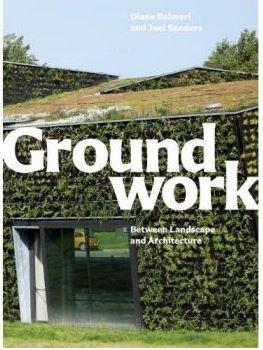- Informatii telefonice:(+40) 748 400 200
Groundwork. Better Landscape and Architecture | Diana Balmori, Joel Sanders
Cod intern: xsales_1393896Producator: Monacelli Press
Vizualizari: 23 / Achizitii: 16
Stoc: In stoc
Pret: 184.0 RON
Acest produs este publicat in categoria Librarie la data de 15-03-2025: 10:03 si vandut de Carturesti. Vanzatorul isi asuma corectitudinea datelor publicate. ( alege finantarea potrivita )
-
Produs cu garantie
-
Livrare direct din stocul fizic al Carturesti
-
Retur gratuit minim 14 zile de la data achizitiei
The current environmental crisis calls for a unified practice of landscape and architecture that would allow buildings and landscapes to perform symbiotically to heal the environment. Over the past ten years, a diverse group of architects, landscape architects, and artists have undertaken groundbreaking projects that propose an integration of landscape and architecture, dissolving traditional distinctions between building and environment. Groundwork: Between Landscape and Architecture examines twenty-five projects, on an international scale, that consider landscape and architecture as true reciprocal entities. Groundwork divides the projects into three design directions: Topography, Ecology, and Biocomputation. Topographic designers create projects that manipulate the ground to merge building and landscape as in Cairo Expo City in Egypt (Zaha Hadid Architects), Island City Central Park Grin Grin in Fukuoka, Japan (Toyo Ito & Associates) and the City of Culture of Galicia in Santiago de Compostela, Spain (Eisenman Architects). Ecologic designers develop environments that address issues such as energy climate and remediation, such as I’m Lost In Paris in France (R&Sie(n)), Turistroute in Eggum, Norway (Snøhetta) and Parque Atlántico in Santander, Cantabria, Spain (Batlle i Roig Arquitectes). Biocomputation designers use digital technologies to align biology and design in projects such as the Grotto Concept (Aranda/Lasch), North Side Copse House in West Sussex, England (EcoLogicStudio) and Local Code: Real Estates (Nicolas de Monchaux.) What these projects all have in common is a desire to pay attention and homage to the liminal space where indoors and outdoors meet. The critical connection between natural and synthetic, exterior and interior space, paves the way toward a more inclusive—and indeed more alive—conceptualization of the physical world.



























Scrie parerea ta
Groundwork. Better Landscape and Architecture | Diana Balmori, Joel Sanders
Ai cumparat produsul Groundwork. Better Landscape and Architecture | Diana Balmori, Joel Sanders ?
Lasa o nota si parerea ta completand formularul alaturat.
The current environmental crisis calls for a unified practice of landscape and architecture that would allow buildings and landscapes to perform symbiotically to heal the environment. Over the past ten years, a diverse group of architects, landscape architects, and artists have undertaken groundbreaking projects that propose an integration of landscape and architecture, dissolving traditional distinctions between building and environment. Groundwork: Between Landscape and Architecture examines twenty-five projects, on an international scale, that consider landscape and architecture as true reciprocal entities. Groundwork divides the projects into three design directions: Topography, Ecology, and Biocomputation. Topographic designers create projects that manipulate the ground to merge building and landscape as in Cairo Expo City in Egypt (Zaha Hadid Architects), Island City Central Park Grin Grin in Fukuoka, Japan (Toyo Ito & Associates) and the City of Culture of Galicia in Santiago de Compostela, Spain (Eisenman Architects). Ecologic designers develop environments that address issues such as energy climate and remediation, such as I’m Lost In Paris in France (R&Sie(n)), Turistroute in Eggum, Norway (Snøhetta) and Parque Atlántico in Santander, Cantabria, Spain (Batlle i Roig Arquitectes). Biocomputation designers use digital technologies to align biology and design in projects such as the Grotto Concept (Aranda/Lasch), North Side Copse House in West Sussex, England (EcoLogicStudio) and Local Code: Real Estates (Nicolas de Monchaux.) What these projects all have in common is a desire to pay attention and homage to the liminal space where indoors and outdoors meet. The critical connection between natural and synthetic, exterior and interior space, paves the way toward a more inclusive—and indeed more alive—conceptualization of the physical world.
Acorda un calificativ